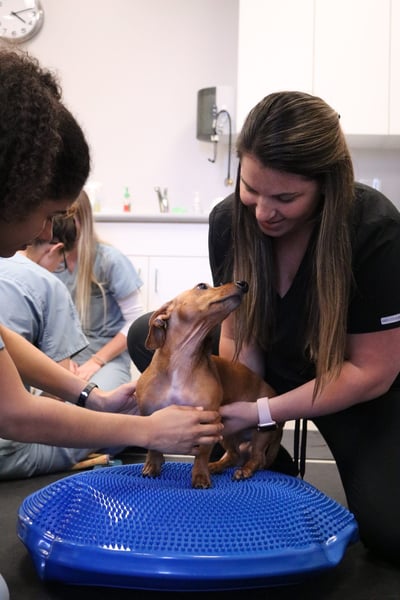Preventing Dog Obesity: How to Give Your Dog a Longer, Happier Life
The Association for Pet Obesity Prevention reports that 55.8% of America’s dogs are overweight. Just like in humans, dog obesity can lead to heart disease, diabetes, arthritis, and even cancer.
Extra pounds also exacerbate other conditions in dogs, like neurological issues. In fact, obese dogs of all breeds are at increased risk of intervertebral disc disease (IVDD), one of the most common conditions seen in veterinary neurology.
The good news is that keeping your dog at a healthy weight can add years to its life! Here’s how.
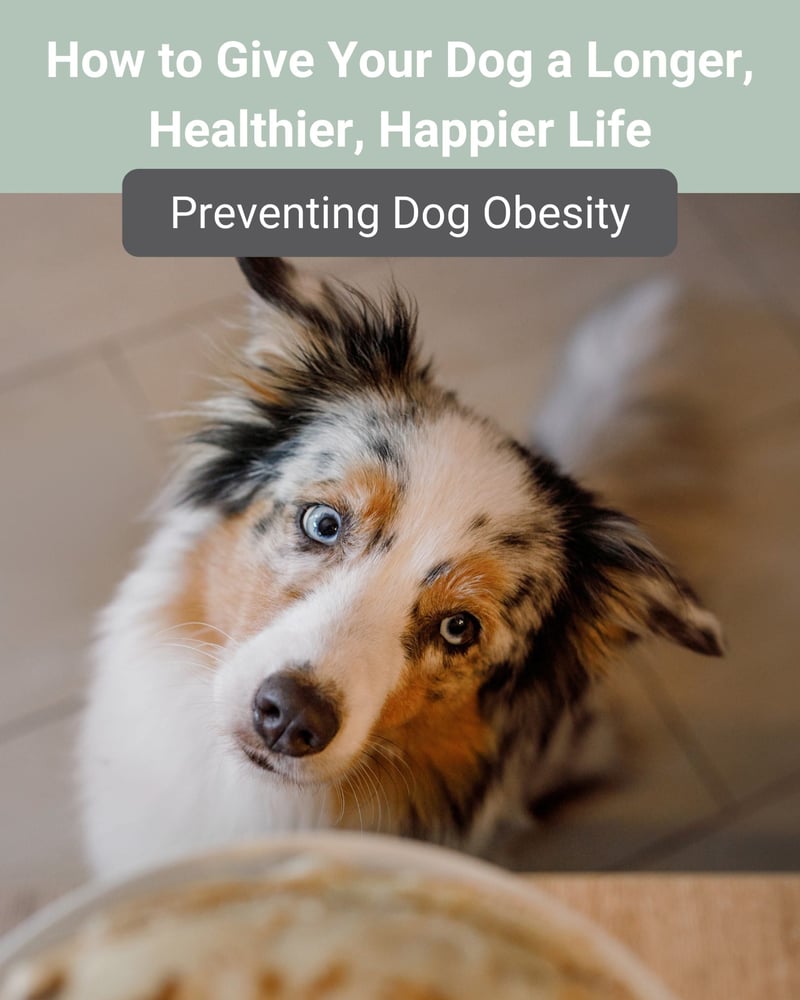
Diet and Dog Obesity
When it comes to dog obesity, the number one contributing factor is what and how much your dog eats.
Expensive doesn’t mean best, and many pet parents don’t realize the feeding chart on the dog food bag is for ideal weight, not current weight. You should consult a veterinarian to choose the best food for your dog and to calculate its daily caloric requirement.
Once you figure out what your dog should eat at mealtimes, keep in mind that anything else is added calories. While treats are a significant part of your relationship, there are plenty of low calorie options, like baby carrots and apple pieces (without seeds!).
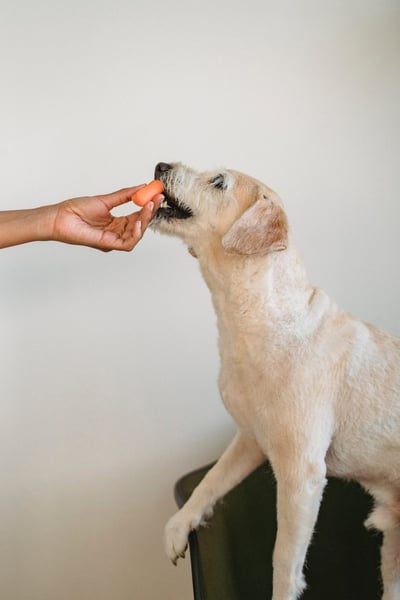
Exercise and Dog Obesity
The other piece to the puzzle is something most of our dogs don’t get enough of today – exercise. Exercise helps dogs maintain strong cardiovascular and immune systems, and it reduces the risk of dog obesity.
Exercise is also the key to mental health in dogs. It provides mental stimulation, staving off boredom, stress, and excess energy. A tired dog is a good dog!
Best of all, exercise fosters an even stronger bond between you and your dog. Considering that 42.4% of America’s adult humans are obese, it wouldn’t be a bad move to get moving together! But where do you begin?
Before starting any regimen, confirm your dog is healthy enough with a veterinarian. Here are some ideas to get you started.
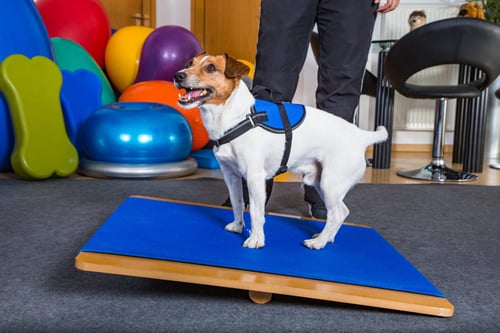
MENTAL DOG EXERCISES
Dogs with health issues, dogs recovering from injuries or surgeries, or geriatric dogs may have limited mobility, but mental stimulation is still paramount to their wellbeing. “Mental exhaustion is just as important as physical exhaustion! Dogs need something to do, and keeping their minds sharp is important,” says Dr. Webb.
Nose Work
Hide treats, toys, balls, or even yourself around the house for your dog to find, and give lots of praise when they do!
Food Dispensing Toys
Fill them up, and your dog has to problem solve to get food out. You can even use them at mealtime. “There are many mind-stimulating dog toys you can easily find on Amazon. I recommend having two-three,” says Dr. Webb.
LOW IMPACT DOG EXERCISES
Even dogs restricted from high intensity activity need exercise. According to Dr. Webb, low impact exercises are appropriate for all dogs, including seniors, lower-energy dogs, and short-legged or short-nosed breeds.
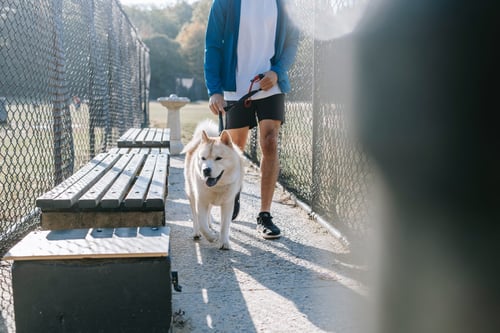
Walking
All dogs need to walk! EVERY DAY. Even the high-intensity lovers need to slow down and walk. It fulfills an innate urge to migrate and gives them the opportunity to take in new sights, sounds, and scents. It’s also a powerful tool for building the human-canine bond.
Resistance Walking
Want to step up the walk? Try walking your dog through snow, sand, shallow water, a leaf-filled trail, or hike an incline!
Swimming
“Swimming is great for all dogs!” says Dr. Webb. “Buoyancy takes weight off joints (great for geriatrics) and allows easy movement of limbs, helping maintain range of motion. It’s a full-body cardio and strength workout! To be safe, owners should be in the water with their dogs, and dogs should have the support of a life vest. To help avoid a fear of the water, it’s best if dogs can walk in on their own. As always, lots of positive reinforcement helps!” Consider swimming alongside your pup to maximize health benefits for you both!
HIGH INTENSITY DOG EXERCISES
Although not appropriate for all dogs, fully mature, healthy, energetic dogs need (and crave!) high intensity activity.
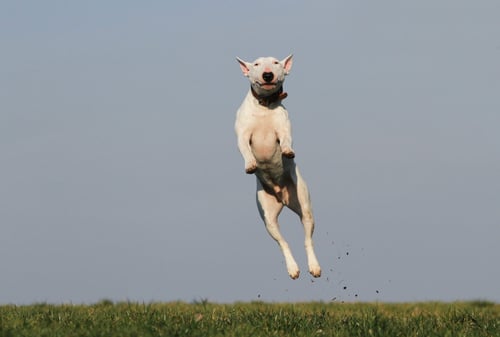
Running
Running, jogging, and even interval training with your dog is the perfect way to keep your hearts healthy and happy. There are even hands-free leashes!
Skating
Whether you inline, rollerblade, or skateboard, your dog can go too. Just be sure to wear appropriate safety gear.
Bicycling
Biking is high-intensity for high-energy dogs, yet low impact for you. You can give them what they need without limiting them to your endurance. A harness works best, and there are even bicycle leash attachments for a safe ride.
Draft Work
Dogsledding isn’t just for Huskies! A special harness and some basic training is required, but larger breeds often enjoy pulling weight; whether it’s a sled, cart, or skijoring (a sport in which your dog pulls you on skis).
Fetch
Fetching is another exhausting exercise for dogs that love it, while asking very little of you. However, it doesn’t have to be boring. While you wait for your dog to bring back the ball, fit in burpees, squats, lunges, etc. to get a full body HIIT workout yourself. Gain three times more “you” time with a ball thrower!
Flirt Pole
An excellent option for dogs with strong toy (or prey) drive, it’s basically a long pole with a lure attached to a rope on the end. It’s one of the quickest ways to exercise a dog, while requiring very little effort on your part and yet still providing plenty of physical and mental stimulation for dogs.
Dog Sports
Agility is a rewarding way to achieve physical and mental exhaustion for you both. You might not jump through hoops, but you do need to train your dog to interact with each obstacle, as well as keep up with your dog to issue commands. It’s a fun hobby and a unique way to bond. There are also many other dog sports to choose from, like lure coursing and dock diving.
There Is No Reason for Dog Obesity
Dog obesity can result in serious adverse health effects and shorten your dog’s life, but it’s totally preventable. Dogs can't serve their own meals (well, most of them anyway!). All you really have to do to control your dog’s weight is control your dog’s food.
However, by adding exercise into the mix, you will help your pup reach its ideal body condition and optimal mental health, while cultivating a special bond between you. WIN, WIN, WIN.
Physical Rehabilitation for Dog Obesity
Did you know that Physical Rehabilitation at Southeast Veterinary Neurology is not just for neurological patients? If you have questions about how to properly feed and exercise your dog, our Canine Rehabilitation Therapists can help. Make an appointment today!
